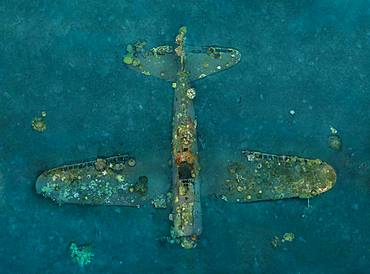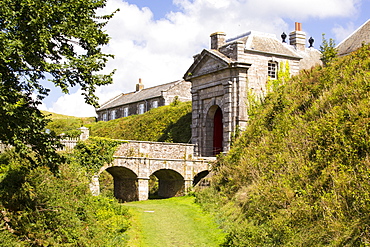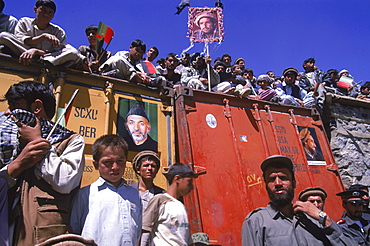Recent searches
Loading...
832-397143 - War memorial to the fallen of the 1st World War at the Place de la Liberte, medieval old town of Domfront, Domfront en Poiraie, department of Orne, Normandy region, France, Europe
1116-50090 - Bench as a war memorial (1918 - 2018) commemorating one hundred years, Chollerton Parish; Chollerton, Northumberland, England
860-287442 - Tara Pacific expedition - november 2017 Kimbe Bay, papua New Guinea, Zero wreck: Coral growth on this wreck is from a period of 74 years ! D: 15 m The ZERO, is a Japanese WW2 fighter plane wreck. This Zero wreck was discovered in January 2000 by local William Nuli while he was freediving for sea cucumbers. He asked the Walindi Plantation Resort dive team if they might know what it was, and when they investigated they uncovered the intact wreck of a Zero fighter, resting on a sedimented bottom in 15 m depth. This World War II Japanese fighter is almost completely intact. The plane is believed to have been ditched, the pilot is believed to have survived, but was never found on the island. He never returned home. Maybe he disappeared in the jungle? On 26th December 1943, during the battle of Cape Gloucester, the Japanese pilot made an emergency landing, ditching his Mitsubishi A6M Zero plane into the sea approximately 100m off West New Britain Province. The plane was piloted by PO1 Tomiharu Honda of the 204st K?k?tai. His fate is unknown but it is believed the he made a controlled water landing after running out of fuel and survived. Although he failed to return to his unit, the plane was found with the throttle and trim controls both set for landing and the canopy was open. There are no visible bullet holes or other shrapnel damage and the plane is still virtually intact after over 70 years underwater. It is a A6M2 Model 21 Zero, made famous for its use in Kamikaze attacks by the Japanese Imperial Navy. The wreck has the Manufacture Number 8224 and was built by Nakajima in late August 1942.
860-287440 - Tara Pacific expedition - november 2017 Zero wreck, vertical view Orthomosaic from 3D photogrammetry (13500 x 10000 px). D: 15 m Kimbe Bay, papua New Guinea, Coral growth on this wreck is from a period of 74 years ! The ZERO, is a Japanese WW2 fighter plane wreck. This Zero wreck was discovered in January 2000 by local William Nuli while he was freediving for sea cucumbers. He asked the Walindi Plantation Resort dive team if they might know what it was, and when they investigated they uncovered the intact wreck of a Zero fighter, resting on a sedimented bottom in 15 m depth. This World War II Japanese fighter is almost completely intact. The plane is believed to have been ditched, the pilot is believed to have survived, but was never found on the island. He never returned home. Maybe he disappeared in the jungle? On 26th December 1943, during the battle of Cape Gloucester, the Japanese pilot made an emergency landing, ditching his Mitsubishi A6M Zero plane into the sea approximately 100m off West New Britain Province. The plane was piloted by PO1 Tomiharu Honda of the 204st K?k?tai. His fate is unknown but it is believed the he made a controlled water landing after running out of fuel and survived. Although he failed to return to his unit, the plane was found with the throttle and trim controls both set for landing and the canopy was open. There are no visible bullet holes or other shrapnel damage and the plane is still virtually intact after over 70 years underwater. It is a A6M2 Model 21 Zero, made famous for its use in Kamikaze attacks by the Japanese Imperial Navy. The wreck has the Manufacture Number 8224 and was built by Nakajima in late August 1942.
911-10750 - The Remains of the Godwin battery on the beach at Kilnsea at the head of Spurn point on Yorkshires East Coast, UK. Initially constructed during the First World War, the Godwin Battery was added to during the Second World War. It comprised of gun emplacements, search light, barracks, officers’ mess, and a hospital. This section of coastline is the fastest eroding coastline in Europe. The soft boulder clay cliffs are easily eroded and have been eroding since Roman Times, but recently the climate change impacts of increased stormy weather, increased heavy rainfall events and sea level rise have accelerated the rate of erosion. The average rate of attrition is 1.5metres per year, last year it was 5 metres.
911-10749 - The Remains of the Godwin battery on the beach at Kilnsea at the head of Spurn point on Yorkshires East Coast, UK. Initially constructed during the First World War, the Godwin Battery was added to during the Second World War. It comprised of gun emplacements, search light, barracks, officers’ mess, and a hospital. This section of coastline is the fastest eroding coastline in Europe. The soft boulder clay cliffs are easily eroded and have been eroding since Roman Times, but recently the climate change impacts of increased stormy weather, increased heavy rainfall events and sea level rise have accelerated the rate of erosion. The average rate of attrition is 1.5metres per year, last year it was 5 metres.
911-10108 - Henry VIII's Fort at Pendennis Castle, a fortress that has protected Cornwall from invasion for 450 years, Falmouth, UK.
911-10109 - Henry VIII's Fort at Pendennis Castle, a fortress that has protected Cornwall from invasion for 450 years, Falmouth, UK.
911-10106 - Pendennis Castle, a fortress that has protected Cornwall from invasion for 450 years, Falmouth, UK.
911-10105 - Pendennis Castle, a fortress that has protected Cornwall from invasion for 450 years, Falmouth, UK.
851-572 - Blood Swept Lands and Seas of Red installation at The Tower of London marking 100 years since the First World War, Tower of London, UNESCO World Heritage Site, London, England, United Kingdom, Europe
851-574 - Blood Swept Lands and Seas of Red installation at The Tower of London marking 100 years since the First World War, London, England, United Kingdom, Europe
851-573 - Shadows of people viewing Blood Swept Lands and Seas of Red installation at The Tower of London marking 100 years since the First World War, London, England, United Kingdom, Europe
851-571 - Blood Swept Lands and Seas of Red installation at The Tower of London marking 100 years since the First World War, London, England, United Kingdom, Europe
832-276990 - Equestrian monument Elector Maximilian I from Bertel Thorvaldsen 1830 to 1836 Wittelsbacher Platz Munich Muenchen Upper Bavaria Germany
832-276435 - Rain district Donau-Ries Bavarian Swabia Bavaria Germany monument for field marshal Johann Tserclaes count of Tilly deadly wounded during the battle of Rain 1632 relief on the side wall elector prince Maximilian I. of Bavaria design by Anton Kaindl castin
832-237113 - Bust of Albrecht von Wallenstein, Duke and General of the Thirty Years' War
1116-12245 - Kosevo Cemetery was built during the war on the site of former football practice pitches of Sarajevo, Bosnia & Herzegovina. The citizens of Sarajevo needed a place to bury the dead, hence this cemetery came to being; practically all the death years are similar.
1116-12530 - Kosevo Cemetery was built during the war on the site of former football practice pitches of Sarajevo, Bosnia & Herzegovina. The citizens of Sarajevo needed a place to bury the dead, hence this cemetery came to being; practically all the death years are similar.
1116-12531 - Kosevo Cemetery was built during the war on the site of former football practice pitches of Sarajevo, Bosnia & Herzegovina. The citizens of Sarajevo needed a place to bury the dead, hence this cemetery came to being; practically all the death years are similar.
857-67158 - A LAotian-American female monk with shaved head makes an offering of rice during worship as the Laotian American community celebrates the Buddhist new year by gathering at a property in suburban East Hartford Connecticut on April 28, 2007. Several shrines are set up on the property. The celebrants leave offerings of food, flowers and money, pray, dance, and feast for a day. Immigrants from Laos, including the Hmong people, are refugees from the Vietnam War era, when they helped United States in the war.
857-33945 - Men, soldiers and schoolboys carry banners and photos to the shrine in the Panjshir Valley of the famous Tajik commander, Ahmad Shah Masood, during a memorial on the one year anniversary of his assasination, September 9, 2002. Masood was a revered mujahedin leader who also was one of the leaders of the Northern Alliance which opposed the Taliban and helped the US Military in their defeat. Masood was assasinated by what are thought to be Al Queda operatives on Sept. 9, 2001. A shrine has been erected in the Panjshir Valley from where he led much of his resistance to both the Soviet and Taliban forces, to honor this latest of Afghan war heros.
857-31805 - Campesinos wash for market freshly-picked carrots in a river in Los Negros, Bolivia Friday, Nov. 12, 2004. Ernesto "Che" Guevara was captured by the Bolivian army in 1967 in a nearby valley and executed in La Higuera days later. His body was put on public display in the laundry room of the Vallegrande hospital, then secretly buried under the air strip for 30 years. Guevara and fellow communist guerillas were attempting to launch a continent-wide revolution modeled on Guevara's success in Cuba in the late 1950s. The Bolivian government recently began promoting the area where he fought, was captured, killed and burried for 30 years as the "Ruta del Che," or Che's Route.
857-33947 - Schoolboys chant and carry banners to the shrine in the Panjshir Valley of the famous Tajik commander, Ahmad Shah Masood, on the one year anniversary of his assasination, September 9 2002. Masood was a revered mujahedin leader who also was one of the leaders of the Northern Alliance which opposed the Taliban and helped the US Military in their defeat. Masood was assasinated by what are thought to be Al Queda operatives on Sept. 9, 2001. A shrine has been erected in the Panjshir Valley from where he led much of his resistance to both the Soviet and Taliban forces, to honor this latest of Afghan war heros.
857-31793 - Painted images of Ernesto "Che" Guevara stare from a pock-marked wall in La Higuera, Bolivia, Saturday, Nov. 13, 2004. Guevara was captured by the Bolivian army in 1967 in a nearby valley and executed in La Higuera days later. Guevara and fellow communist guerillas were attempting to launch a continent-wide revolution modeled on Guevara's success in Cuba in the late 1950s. The Bolivian government recently began promoting the area where he fought, was captured, killed and burried for 30 years as the "Ruta del Che," or Che's Route.
857-31820 - Vendors sell their wares at a street market in El Torno, Bolivia Friday, Nov. 12, 2004. Ernesto "Che" Guevara was captured by the Bolivian army in 1967 in a nearby valley and executed in La Higuera days later. His body was put on public display in the laundry room of the Vallegrande hospital, then secretly buried under the air strip for 30 years. Guevara and fellow communist guerillas were attempting to launch a continent-wide revolution modeled on Guevara's success in Cuba in the late 1950s. The Bolivian government recently began promoting the area where he fought, was captured, killed and burried for 30 years as the "Ruta del Che," or Che's Route.
857-33952 - Crowds of boys and men, holding posters of Ahmad Shah Masood and Afghan president Hamid Karzai, line the roofs of buildings during a ceremony in the Panjshir Valley on the one year anniversary of Masoods assasination, September 9, 2002. Thousands of people from all over Afghanistan and the world, including many important dignitaries, arrived in the Panjshir Valley for ceremonies honoring Masood, a revered mujahedin leader who also was one of the leaders of the Northern Alliance which opposed the Taliban and helped the US Military in their defeat. Masood was assasinated by what are thought to be Al Queda operatives on Sept. 9, 2001. The shrine to honor this latest of Afghan war heros was built in the Panjshir Valley as that is from where Masood led much popular resistance against both the Soviets and the Taliban forces.
857-33946 - Hundreds of men and boys pray during ceremonies at the shrine of Ahmad Shah Masood in the Panjshir Valley, on the one year anniversary of his assasination, September 9, 2002.. Masood was a revered mujahedin leader who also was one of the leaders of the Northern Alliance which opposed the Taliban and helped the US Military in their defeat. Masood was assasinated by what are thought to be Al Queda operatives on Sept. 9, 2001. A shrine has been erected in the Panjshir Valley from where he led much of his resistance to both the Soviet and Taliban forces, to honor this latest of Afghan war heros.
857-34011 - Elaborate flower wreaths are brought by Afghan soldiers as tokens of respect to the shrine of Ahmad Shah Masood, on the one year anniversary of Masoods assasination, at a ceremony in the Panjshir Valley, Afghanistan, September 9, 2002. Masood was a revered mujahedin leader who fought the Soviets in the Afghan-Soviet war, and who also was one of the main leaders of the Northern Alliance which opposed the Taliban and helped the US Military in their defeat. Masood was assasinated by what are thought to be Al Queda operatives on Sept. 9, 2001. A shrine has been erected in the Panjshir Valley, near the village of Bazarak, from where he led much of his resistance to both the Soviet and Taliban forces, to honor this latest of Afghan war heros.
857-33942 - Children play on a tank in the Panjshir Valley while waiting for ceremonies to begin in honor the one year anniversary of the assasination of Ahmad Shah Masood, September 9, 2002. The Panjshir Valley was a stronghold for the Tajik people and the famous commander Masood in their struggle first against the Soviets and then against the Taliban. The valley and villages of the Panjshir were subjected to heavy bombing and destruction during the Afghan-Soviet war, but was never fully occupied. Now it is the heartland for the powerful Tajik ethnic group, the second largest in Afghanistan, who came to partial power after the fall of the Taliban.
857-18280 - Young girls with Abkhaz flags wait for their turn to perform during a gala show at the main stadium in Sukhumi, celebrating ten years of "independence" from Georgia, and the ten year anniversary of the end of the war, in Sukhum, Abkhazia.
314-2302 - A pair of semi-detached houses from the inter-war years in Herne Hill, London SE24, England, United Kingdom, Europe
You reached the end of search results
































